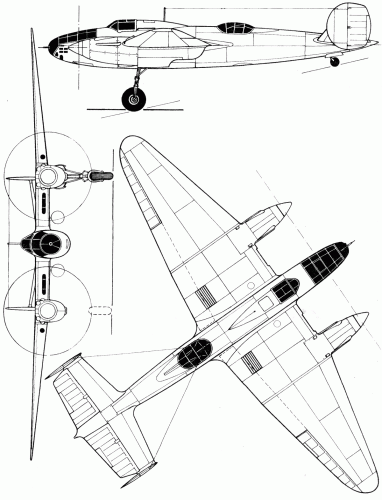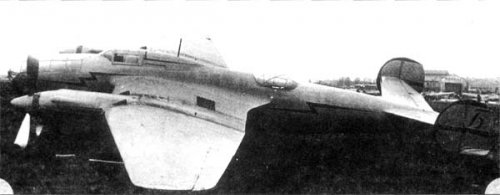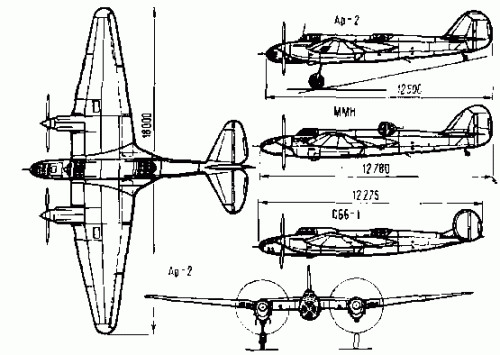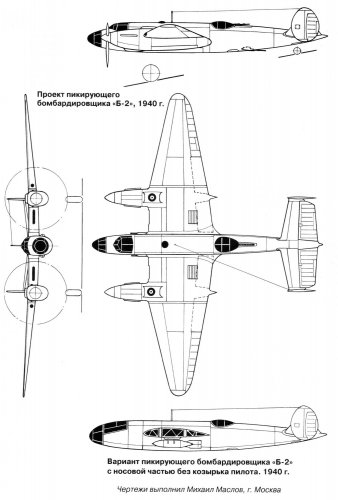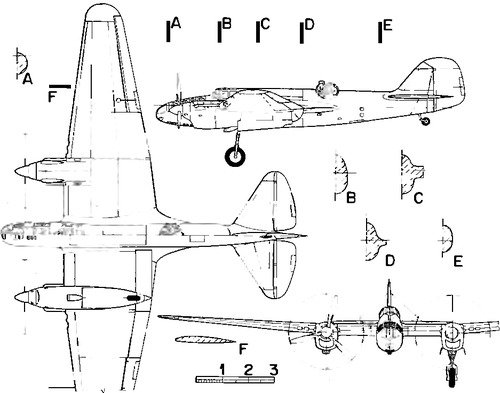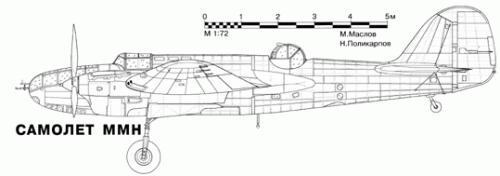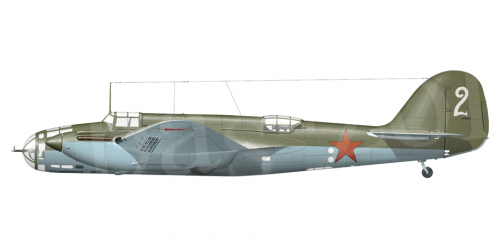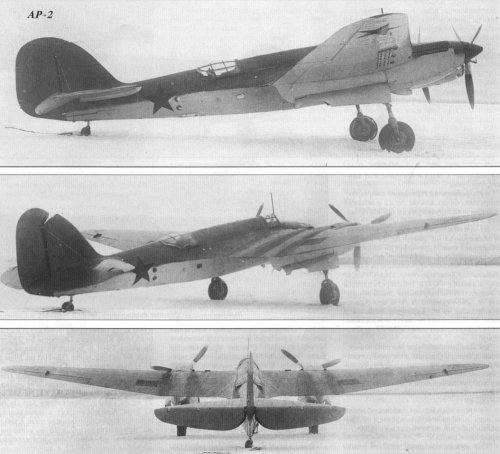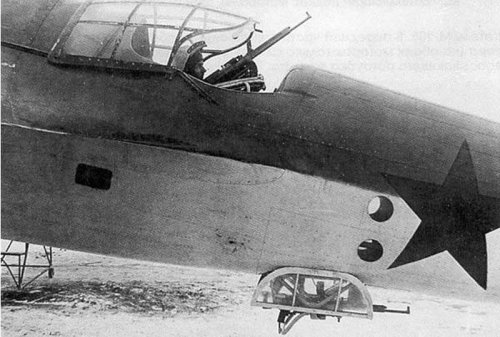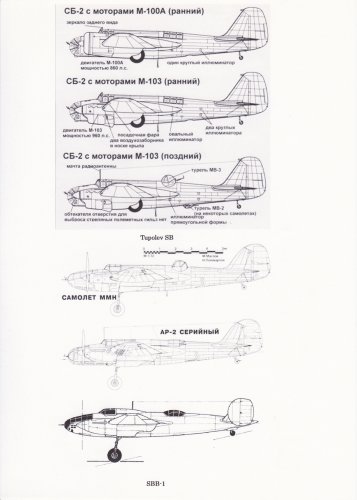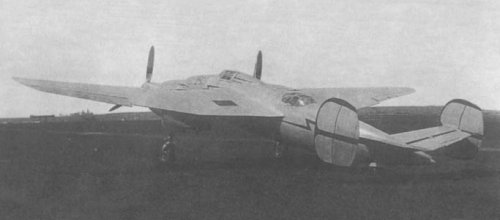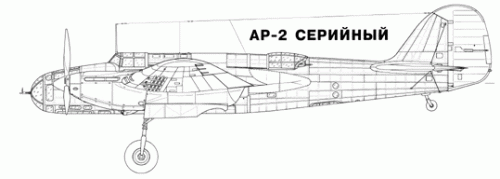blackkite
Don't laugh, don't cry, don't even curse, but.....
- Joined
- 31 May 2007
- Messages
- 8,820
- Reaction score
- 7,721
Hi! Arkhangelsky high speed bomber SBB-1 and dive bomber SBB-2.
http://www.airwar.ru/enc/bww2/sbb.html
http://eroplany.narod.ru/bibl/shavrov2/chr1/p1/sb1.htm
http://alternathistory.com/pikiruyushchii-bombardirovshchik-arkhangelskii-b-2-sssr
http://xn--80aafy5bs.xn--p1ai/aviamuseum/aviatsiya/sssr/bombardirovshhiki-2/bombard-1920-e-1940-e-gody/pikiruyushhij-bombardirovshhik-sbb/
"In parallel with the development of SB-RK(later called Ar-2) with engines M-105 KB Arkhangelsky began to develop a new high-speed near-bomber SBB. First, the new aircraft had an index C (under this designation the airplane was purged in TsAGI), but soon the index of the car was replaced by B. The aircraft was conceived as a cardinal modification of the serial satellites with increased combat performance and continuity in production technology. When designing it, we used the experience of creating MMN , SB-RK, and later Ar-2 . The crew of the SBB included a pilot, a navigator and a radio operator."
"The main advantage of the new aircraft was the significantly improved aerodynamics. The overall configuration and combat scheme of the B bomber were similar to the SAT aircraft, but with a two-keel plumage. In order to "maximize the speed of the aircraft," the load per unit area of the wing in the normal version of the combat load was brought to 149 kg / m2 and to 162 kg / m2 in the overload. In this connection, the wing area was reduced to 40 m2. The wing became shorter and slightly narrower than the wing of the SB. At the same time, to ensure the required landing speed, it was supposed to use the guards of TsAGI, which was a cross between the usual flaps and Fowler flaps. The profile of the wing was chosen to be of the NACA-22 type with a relative thickness at the root of 14.7% and at the end of 8%. "
"As the main engine of the power unit SBB was considered M-105 with a turbocharger TK-2. In addition, it was planned to use the M-106 engine. By this time, the M-105 had already passed 50-hour state tests, and the turbocharger TK-2 was installed on a SAT aircraft with M-103 engines for flight tests. n the future, in order to further improve the aerodynamics of the aircraft, it was planned to install the M-105TK inverted. In this case, the layout of the engine installation and the radiator was improved and a seat in the wing was released to accommodate the fuel tanks instead of the radiators.On this issue, there was an agreement with the engine builders of the 26th plant. However, in the future, from such an option, the power plant was abandoned, as it does not have significant advantages for a bomber aircraft over the traditional installation of a motor. "
"In November 1939, after discussing the layout of the SBB, it was decided to build an airplane. According to the Decree of the Defense Committee of 4 March 1940, two copies of the B-1(SBB-1) and B-2(SBB-2) were built. The first variant corresponded to the variant of the high-speed bomber, and the second - to the dive bomber. The B-2 aircraft differed from the B-1 with a wider fuselage and slightly different layout of the forward part of the fuselage. "
"On April 10, an order was issued on NKAP No. 309, according to which the entire design team of AA Arkhangelsky was transferred to the 32nd plant. Despite the difficulties associated with moving and settling in a new location, in the summer of 1941 a second version of the SBB, the B-2 dive bomber, was being built. It was assumed that, in comparison with the B-1, its maximum speed at the calculated altitude would be greater by 40-60 km / h.
At the same time, in connection with the successes of the 103 and 103U bombers during tests at the Air Force Research Institute, the interest of the military and NKAP in aircraft B was steadily declining, and the war that was started interrupted all sorts of work on this machine. Sam AA Arkhangelsky Order NAKAP No. 823 of August 9, 1941 was transferred to the aircraft factory No. 156 for the organization of repair and recovery of serial bombers SB. Later, AA Arkhangelsky's Design Bureau was evacuated to Omsk in October 1941, and the B-1 aircraft was sent to the rear in December 1941. What happened to him later is unknown. "
SBB-1(СББ-1)
Wing span, m: 16,00
Length, m: 12,27
Height, m: 3,52
Wing area, m2: 46,00
Weight, kg
Empty airplane: 4100
normal take-off: 5980
Engine type: 2 x PD M-105R
power, hp: 2 x 1050
Maximum speed, km / h
On the ground: 454
on height: 540
Cruising speed, km / h: 475
Practical range, km: 880
Lifting capacity, m / min: 788
Practical ceiling, m: 10100
Crew: 3
Ar-2(Ap-2)
https://en.wikipedia.org/wiki/Arkhangelsky_Ar-2
http://aviadejavu.ru/Site/Crafts/Craft20887.htm
Bottom picture explanation.
проект пикирующего бомбардировщика ; Dive Bomber Project
Вариант пикирующего бомбардироВщика с носоВой частъю Без козырька пилота ; Dive bomber option with bow part Without the pilot's visor
So there were two designs for dive bomber.
http://www.airwar.ru/enc/bww2/sbb.html
http://eroplany.narod.ru/bibl/shavrov2/chr1/p1/sb1.htm
http://alternathistory.com/pikiruyushchii-bombardirovshchik-arkhangelskii-b-2-sssr
http://xn--80aafy5bs.xn--p1ai/aviamuseum/aviatsiya/sssr/bombardirovshhiki-2/bombard-1920-e-1940-e-gody/pikiruyushhij-bombardirovshhik-sbb/
"In parallel with the development of SB-RK(later called Ar-2) with engines M-105 KB Arkhangelsky began to develop a new high-speed near-bomber SBB. First, the new aircraft had an index C (under this designation the airplane was purged in TsAGI), but soon the index of the car was replaced by B. The aircraft was conceived as a cardinal modification of the serial satellites with increased combat performance and continuity in production technology. When designing it, we used the experience of creating MMN , SB-RK, and later Ar-2 . The crew of the SBB included a pilot, a navigator and a radio operator."
"The main advantage of the new aircraft was the significantly improved aerodynamics. The overall configuration and combat scheme of the B bomber were similar to the SAT aircraft, but with a two-keel plumage. In order to "maximize the speed of the aircraft," the load per unit area of the wing in the normal version of the combat load was brought to 149 kg / m2 and to 162 kg / m2 in the overload. In this connection, the wing area was reduced to 40 m2. The wing became shorter and slightly narrower than the wing of the SB. At the same time, to ensure the required landing speed, it was supposed to use the guards of TsAGI, which was a cross between the usual flaps and Fowler flaps. The profile of the wing was chosen to be of the NACA-22 type with a relative thickness at the root of 14.7% and at the end of 8%. "
"As the main engine of the power unit SBB was considered M-105 with a turbocharger TK-2. In addition, it was planned to use the M-106 engine. By this time, the M-105 had already passed 50-hour state tests, and the turbocharger TK-2 was installed on a SAT aircraft with M-103 engines for flight tests. n the future, in order to further improve the aerodynamics of the aircraft, it was planned to install the M-105TK inverted. In this case, the layout of the engine installation and the radiator was improved and a seat in the wing was released to accommodate the fuel tanks instead of the radiators.On this issue, there was an agreement with the engine builders of the 26th plant. However, in the future, from such an option, the power plant was abandoned, as it does not have significant advantages for a bomber aircraft over the traditional installation of a motor. "
"In November 1939, after discussing the layout of the SBB, it was decided to build an airplane. According to the Decree of the Defense Committee of 4 March 1940, two copies of the B-1(SBB-1) and B-2(SBB-2) were built. The first variant corresponded to the variant of the high-speed bomber, and the second - to the dive bomber. The B-2 aircraft differed from the B-1 with a wider fuselage and slightly different layout of the forward part of the fuselage. "
"On April 10, an order was issued on NKAP No. 309, according to which the entire design team of AA Arkhangelsky was transferred to the 32nd plant. Despite the difficulties associated with moving and settling in a new location, in the summer of 1941 a second version of the SBB, the B-2 dive bomber, was being built. It was assumed that, in comparison with the B-1, its maximum speed at the calculated altitude would be greater by 40-60 km / h.
At the same time, in connection with the successes of the 103 and 103U bombers during tests at the Air Force Research Institute, the interest of the military and NKAP in aircraft B was steadily declining, and the war that was started interrupted all sorts of work on this machine. Sam AA Arkhangelsky Order NAKAP No. 823 of August 9, 1941 was transferred to the aircraft factory No. 156 for the organization of repair and recovery of serial bombers SB. Later, AA Arkhangelsky's Design Bureau was evacuated to Omsk in October 1941, and the B-1 aircraft was sent to the rear in December 1941. What happened to him later is unknown. "
SBB-1(СББ-1)
Wing span, m: 16,00
Length, m: 12,27
Height, m: 3,52
Wing area, m2: 46,00
Weight, kg
Empty airplane: 4100
normal take-off: 5980
Engine type: 2 x PD M-105R
power, hp: 2 x 1050
Maximum speed, km / h
On the ground: 454
on height: 540
Cruising speed, km / h: 475
Practical range, km: 880
Lifting capacity, m / min: 788
Practical ceiling, m: 10100
Crew: 3
Ar-2(Ap-2)
https://en.wikipedia.org/wiki/Arkhangelsky_Ar-2
http://aviadejavu.ru/Site/Crafts/Craft20887.htm
Bottom picture explanation.
проект пикирующего бомбардировщика ; Dive Bomber Project
Вариант пикирующего бомбардироВщика с носоВой частъю Без козырька пилота ; Dive bomber option with bow part Without the pilot's visor
So there were two designs for dive bomber.

